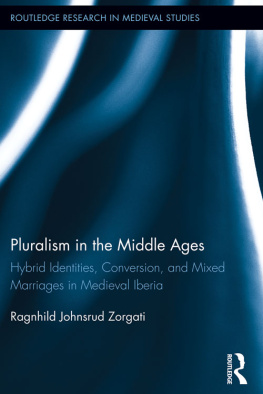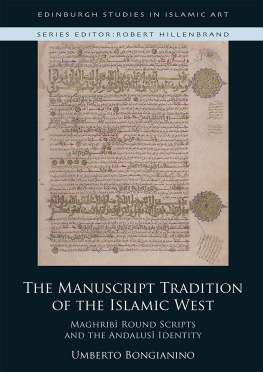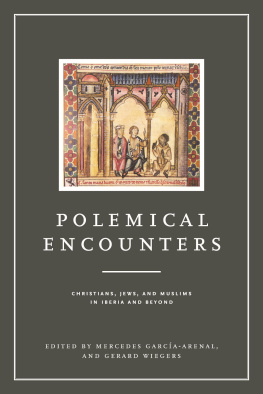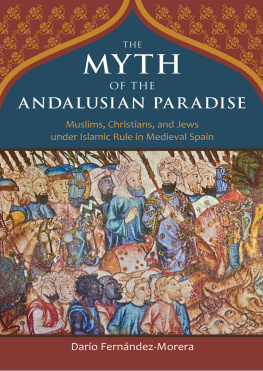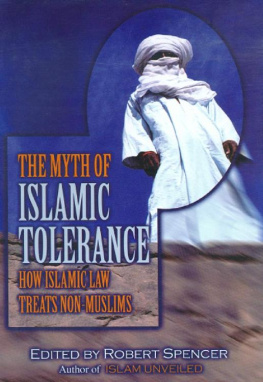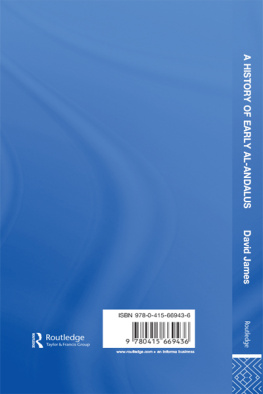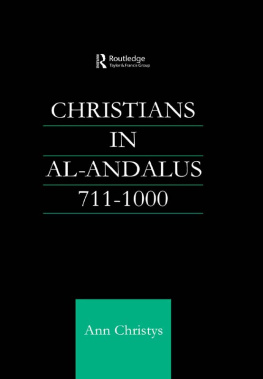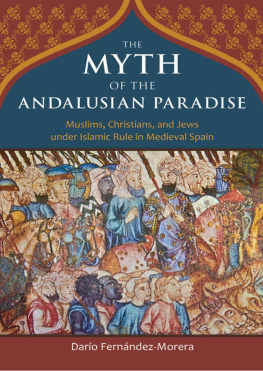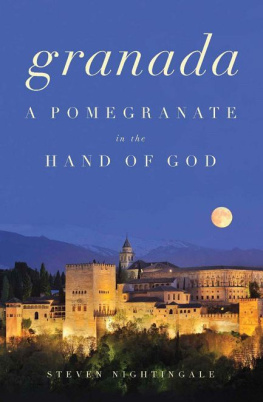ACKNOWLEDGMENTS
I am grateful to the National Endowment for the Humanities for generous fellowship support for this project. I also owe a debt of gratitude to the Institute for the Arts and Humanities at the Pennsylvania State University for granting me a resident scholarship for one semester, and the College of the Liberal Arts at the Pennsylvania State University for a sabbatical granting me time away from teaching and administrative responsibilities to learn, research, and write more intensively.
I learned about Islamic law, the Maliki madhhab (school of law), and Andalusi and Maghribi jurists and texts from the work of a number of eminent scholars and benefited tremendously over the years it took to develop this project from the well-directed references, perceptive questions, and comments of many scholars and students. These include the comments of anonymous readers for articles I wrote along the way, and the recommendations of the editors of Speculum, History of Religions , and Comparative Islamic Studies . Thank you, all. I would like to single out for acknowledgment four scholars who read the manuscript in different stages of its development with thoughtful attention and provided me with guidance: David S. Powers, Simon R. Doubleday, David J. Wasserstein, and Thomas F. Glick. The book is far better for their care, and its shortcomings are my own. Two workshops at different ends of the writing process helped me formulate my approach and my conclusions: the Medieval and Early Modern History Workshop at Brown University and a workshop in Madrid on the legal status of dhimms in the Muslim West sponsored by two European Research Council Seventh Framework Programme Advanced Research Grants (one directed by Maribel Fierro, the other by John Tolan), and hosted by the Consejo Superior de Investigaciones Cientficas and by the Casa de Velzquez. I would like to thank Tara Nummedal and Caroline Castiglione for inviting me to the first, John Tolan and Maribel Fierro for inviting me to the second, and all involved for such stimulating occasions for discussion.
Family provides special support, and that, too, merits acknowledgment. Heartfelt thanks to Dan and Anna, and Anita, Liz, and Abby.
Introduction
In 711 Tariq ibn Ziyad, the Berber conqueror of al-Andalus, and his warriors landed at Gibraltar. Legend has it that the prophet Muhammad appeared to Tariq as he slept onboard the vessel that carried him across the straits from the northern tip of Africa to the southern promontory of the Iberian Peninsula. The Prophet, leading a ghostly host of his companions from Mecca and Medina, armed with swords and bows, greeted Tariq and enjoined him to go forward in his mission. At the end of the voyage Tariq awoke and told his men of the portentous dream that he believed augured well.
This story relates the arrival of Islam in al-Andalus in a tenth-century narrative of the Arab and Berber conquest of the peninsula and history of Umayyad rule. In a few sentences, an expedition that may have started out as a raiding party acquires retrospective historical and religious significance. The dream affirms that the conquest of the peninsula was divinely guided and that the conquerors claimed the land for Islam. The author of the narrative, Ibn al-Qutiyya (d. 977), and his audience were no doubt confident of the enduring continuity of Muslim rule and the primacy of Islam. Ibn al-Qutiyya was grounded in the history he related; he proudly traced his origins to a marriage arranged three generations earlier by the Umayyad caliph in Damascus between a client of his, Isa ibn Muzahim, and Sara, a granddaughter of the Visigothic king Witiza. The son of a judge and himself a scholar who had studied with some of the prominent Andalusi jurists of his day, as well as a historian and highly regarded grammarian, Ibn al-Qutiyya was also certainly aware that the establishment of Islam in al-Andalus was a project of generations.
One of Ibn al-Qutiyyas students, Ibn al-Faradi (d. 1013), wrote a biographical dictionary of Andalusi religious scholars ( ulam ), organizing alphabetically the leading lights of generations of Islamic learning in the peninsula. Most of his entries are about scholars who lived in the ninth and tenth centuries (including contemporaries) and testify how Andalusi scholars avidly pursued and promoted learning, traveling to study and consult with scholars abroad, primarily in the Maghrib, the Hijaz, and Egypt, and cultivating Islamic scholarship at home. Andalusi jurists of the ninth and tenth centuries, in fact, participated in a transregional, multigenerational discourse that drove the development of one of the major Sunni traditions or schools of law, the Maliki madhhab , as the following abridged example illustrates. Abd al-Malik ibn Habib (d. 853), a member of a council of jurists in Cordoba and a legal scholar, added his opinion to a series of interpretations of the legal meaning and implications of a statement attributed to the second caliph, Umar ibn al-Khattab (r. 634644). Umars rule from Medina encompassed recently conquered lands beyond the Arabian Peninsula with predominantly Christian populations, and he reportedly said, I disapprove of entering churches and prayer in them. Ibn Habib takes up a line of interpretation that begins with Malik ibn Anass (c. 711795) disapproval of Muslims entering and praying in churches for reasons of purity (noting the floor where unclean Christians tread) and the Qayrawani jurist Sahnun ibn Saids (d. 854) position that whoever prays in a church should repeat the prayer, just as a Muslim who prays wearing Christian cloth (or clothes) should do. Ibn Habib asserts that a Muslim should always repeat prayer performed in a church if he prays without using a clean floor covering, just as one who prays on an unclean spot of ground or in unclean clothes should do, and he dispenses with qualifications having to do with circumstances (such as whether the actor acted out of necessity and whether the actor knew the place was unclean).
The discourse presented here in brief is part of a more extended ramification of legal implications and qualifications starting from this one statement (another line of interpretation is that Umar disapproved because of the images or icons in churches). The reader may be struck by the way the elaboration of opinion includes accommodation of prayer in churches (with a clean floor covering), given the original statement and its symbolic potency, but perhaps not surprised if he or she follows the given line of legal reasoning. The question that comes to mind is how the legal discourse related to practice. Generally speaking, the discourse on prayer in churches exemplifies how jurists dedicated a great deal of attention to matters of ritual purity, including consideration of various forms of contact and contexts of interaction with the non-Muslims among whom they lived. The discourse may also have had more specific practical relevance. Muslims purportedly shared the churches of St. John in Damascus and St. Vincent in Cordoba with Christians before the erection of congregational mosques on their sites; perhaps jurists thus addressed past practices. Jurists also discussed prayer in abandoned or ruined churches, which were not uncommonly turned into mosques. Andalusi jurists of the ninth and tenth centuries under the aegis of Umayyad rule engaged in the development of the Maliki madhhab as part of the process of defining Islam in their local context, a context of religious and ethnic diversity and social and cultural change. This process is the subject of inquiry of Defining Boundaries . Tariqs crossing in 711 and the Muslim conquest of al-Andalus that followed were the first steps toward the establishment of Umayyad rule and preliminary to the development of Islam in Iberia.


